Refine search
Actions for selected content:
23990 results in Ancient history
Conclusions
- from Part I - Punishment, reform and penance
-
- Book:
- Prison, Punishment and Penance in Late Antiquity
- Published online:
- 05 September 2015
- Print publication:
- 05 June 2015, pp 113-116
-
- Chapter
- Export citation
Chapter 7 - Exile and confinement
- from Part II - Prison and punishment
-
- Book:
- Prison, Punishment and Penance in Late Antiquity
- Published online:
- 05 September 2015
- Print publication:
- 05 June 2015, pp 194-241
-
- Chapter
- Export citation
Chapter 3 - Christian principles of punishment
- from Part I - Punishment, reform and penance
-
- Book:
- Prison, Punishment and Penance in Late Antiquity
- Published online:
- 05 September 2015
- Print publication:
- 05 June 2015, pp 64-88
-
- Chapter
- Export citation
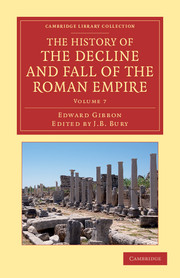
The History of the Decline and Fall of the Roman Empire
- Edited in Seven Volumes with Introduction, Notes, Appendices, and Index
-
- Published online:
- 05 June 2015
- Print publication:
- 14 February 2013
- First published in:
- 1900
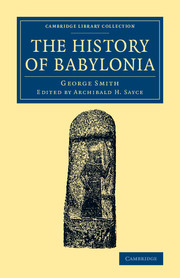
The History of Babylonia
-
- Published online:
- 05 June 2015
- Print publication:
- 06 November 2014
- First published in:
- 1877
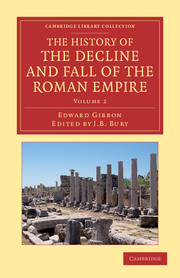
The History of the Decline and Fall of the Roman Empire
- Edited in Seven Volumes with Introduction, Notes, Appendices, and Index
-
- Published online:
- 05 June 2015
- Print publication:
- 14 February 2013
- First published in:
- 1896
Part III - Prison and penance
-
- Book:
- Prison, Punishment and Penance in Late Antiquity
- Published online:
- 05 September 2015
- Print publication:
- 05 June 2015, pp 279-353
-
- Chapter
- Export citation
Chapter 5 - The public prison in late antiquity
- from Part II - Prison and punishment
-
- Book:
- Prison, Punishment and Penance in Late Antiquity
- Published online:
- 05 September 2015
- Print publication:
- 05 June 2015, pp 119-150
-
- Chapter
- Export citation

The History of the Decline and Fall of the Roman Empire
- Edited in Seven Volumes with Introduction, Notes, Appendices, and Index
-
- Published online:
- 05 June 2015
- Print publication:
- 14 February 2013
- First published in:
- 1898
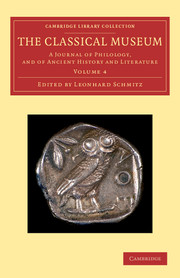
The Classical Museum
- A Journal of Philology, and of Ancient History and Literature
-
- Published online:
- 05 June 2015
- Print publication:
- 13 December 2012
- First published in:
- 1847
Appendix I - Places of forced residence, fourth to sixth centuries (excluding exiles placed in confinement and monastic exiles; on these see Appendices II and III)
- from Appendices
-
- Book:
- Prison, Punishment and Penance in Late Antiquity
- Published online:
- 05 September 2015
- Print publication:
- 05 June 2015, pp 358-373
-
- Chapter
- Export citation
Index
-
- Book:
- Prison, Punishment and Penance in Late Antiquity
- Published online:
- 05 September 2015
- Print publication:
- 05 June 2015, pp 415-422
-
- Chapter
- Export citation

A History of Greece
- To the Death of Alexander the Great
-
- Published online:
- 05 June 2015
- Print publication:
- 05 March 2015
- First published in:
- 1900
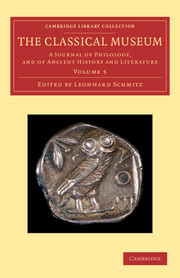
The Classical Museum
- A Journal of Philology, and of Ancient History and Literature
-
- Published online:
- 05 June 2015
- Print publication:
- 13 December 2012
- First published in:
- 1848
Contents
-
- Book:
- Prison, Punishment and Penance in Late Antiquity
- Published online:
- 05 September 2015
- Print publication:
- 05 June 2015, pp vii-viii
-
- Chapter
- Export citation
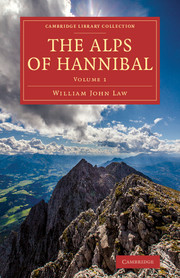
The Alps of Hannibal
-
- Published online:
- 05 June 2015
- Print publication:
- 06 November 2014
- First published in:
- 1866

A History of the Later Roman Empire
- From Arcadius to Irene (395 A.D. to 800 A.D)
-
- Published online:
- 05 June 2015
- Print publication:
- 05 March 2015
- First published in:
- 1889
Part I - Punishment, reform and penance
-
- Book:
- Prison, Punishment and Penance in Late Antiquity
- Published online:
- 05 September 2015
- Print publication:
- 05 June 2015, pp 23-116
-
- Chapter
- Export citation

The Empire of the Ptolemies
-
- Published online:
- 05 June 2015
- Print publication:
- 06 November 2014
- First published in:
- 1895
Part II - Prison and punishment
-
- Book:
- Prison, Punishment and Penance in Late Antiquity
- Published online:
- 05 September 2015
- Print publication:
- 05 June 2015, pp 117-278
-
- Chapter
- Export citation
